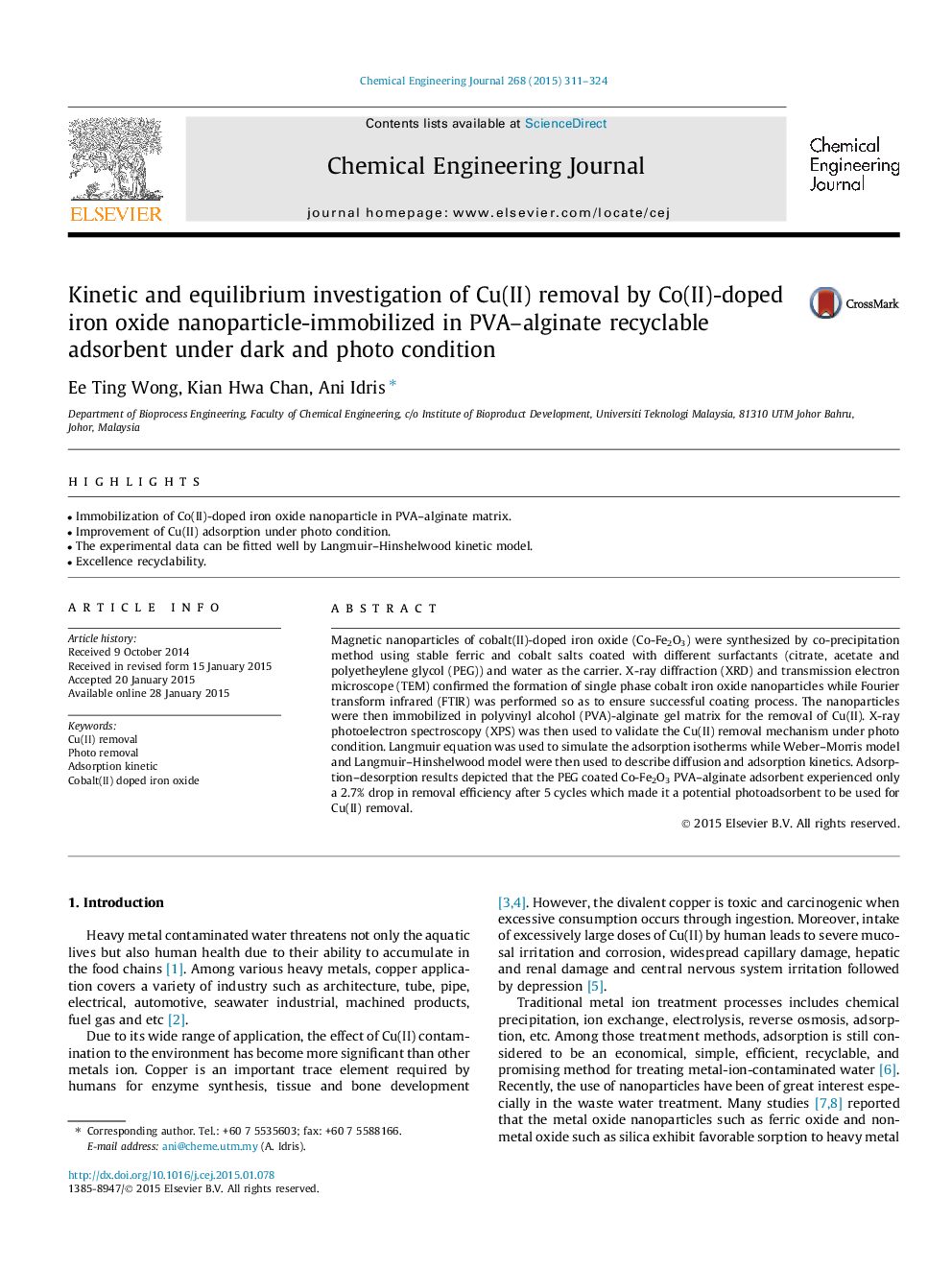| Article ID | Journal | Published Year | Pages | File Type |
|---|---|---|---|---|
| 146576 | Chemical Engineering Journal | 2015 | 14 Pages |
•Immobilization of Co(II)-doped iron oxide nanoparticle in PVA–alginate matrix.•Improvement of Cu(II) adsorption under photo condition.•The experimental data can be fitted well by Langmuir–Hinshelwood kinetic model.•Excellence recyclability.
Magnetic nanoparticles of cobalt(II)-doped iron oxide (Co-Fe2O3) were synthesized by co-precipitation method using stable ferric and cobalt salts coated with different surfactants (citrate, acetate and polyetheylene glycol (PEG)) and water as the carrier. X-ray diffraction (XRD) and transmission electron microscope (TEM) confirmed the formation of single phase cobalt iron oxide nanoparticles while Fourier transform infrared (FTIR) was performed so as to ensure successful coating process. The nanoparticles were then immobilized in polyvinyl alcohol (PVA)-alginate gel matrix for the removal of Cu(II). X-ray photoelectron spectroscopy (XPS) was then used to validate the Cu(II) removal mechanism under photo condition. Langmuir equation was used to simulate the adsorption isotherms while Weber–Morris model and Langmuir–Hinshelwood model were then used to describe diffusion and adsorption kinetics. Adsorption–desorption results depicted that the PEG coated Co-Fe2O3 PVA–alginate adsorbent experienced only a 2.7% drop in removal efficiency after 5 cycles which made it a potential photoadsorbent to be used for Cu(II) removal.
